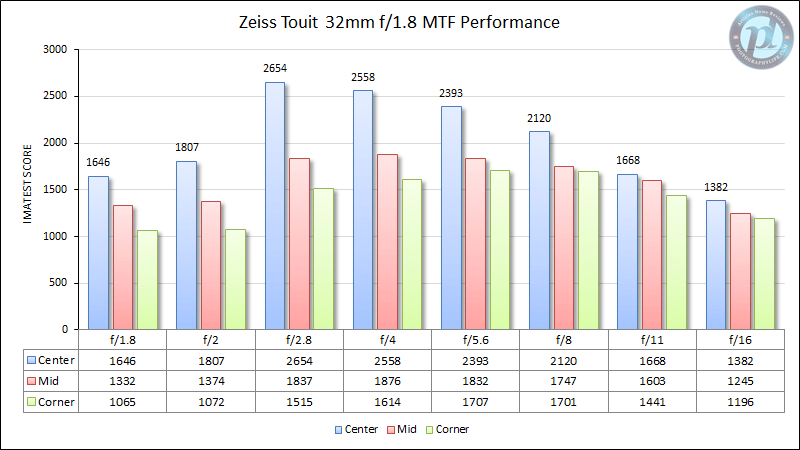Fuji XF 35mm f/1.4 vs Zeiss Touit 32mm f/1.8
The new Zeiss Touit is an expensive piece of optic at $900 retail, which is $300 more expensive than what the Fuji XF 35mm f/1.4 normally sells for. It is two-thirds of a stop slower, but has a nice metal finish typical of Zeiss lenses, a 9-blade diaphragm (vs 7-blade on the Fuji), and Zeiss T* anti-reflective coating.

At the same time, it has a pretty loud focus motor, relatively slow autofocus speed, and the same aperture clicking issue as the Fuji XF 35mm f/1.4 R. Let’s take a look at how the lens performed in comparison:


I tested two samples of the Zeiss Touit 32mm f/1.8. The first sample had some optical issues, showing signs of field curvature and relatively weak corners. The second sample was a much better one, with very little issues and much better field curvature control. The numbers presented above are from the second sample.
As you can see, the Fuji XF 35mm f/1.4 R is a bit weaker wide open, but once it is stopped down to the f/1.8-f/2 range, it matches the Zeiss in center resolution. Once stopped down to f/2.8, the Zeiss Touit 32mm f/1.8 is very sharp, surpassing the Fuji XF 35mm f/1.4 R in both center and corner resolution. The XF 35mm f/1.4 R shines at f/4, but the best corner performance is reached at f/5.6 mark, where it surpasses its competitor in the corners.
I would say that both lenses are fairly good here, with the Fuji XF 35mm f/1.4 R being a slightly better choice for stopped down performance.
Fuji XF 35mm f/1.4 vs Zeiss Touit 32mm f/1.8 Bokeh Comparison
Let’s see how the two lenses stack up against each other in bokeh. Take a look at the below comparison:

It is hard to decide which one looks better, since there are pros and cons to each. The Fuji shows an onion-ring pattern in the highlights, while the Zeiss does not have the same problem. However, the Fuji does not have very well-defined borders, while the Zeiss does (and they are pretty thick).

Comparison Summary
To be honest, the Zeiss Touit 32mm f/1.8 does not seem to be worth the $300 price premium. While both lenses seem to be quite good in terms of their sharpness, there are only specific apertures like f/2.8 where Zeiss shines, with Fuji providing better mid-frame and corner performance, especially when stopped down. In addition to being a slower lens and having other issues highlighted earlier, the Zeiss Touit also suffers from much more pronounced barrel distortion, measuring 1.61% and has much more lateral chromatic aberration.

Table of Contents